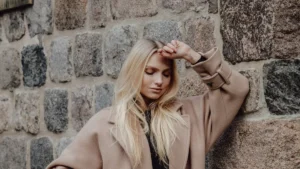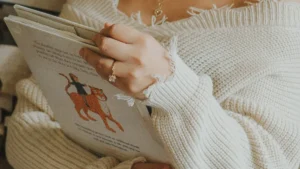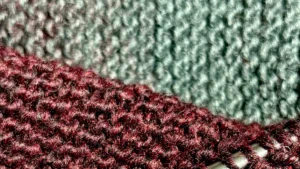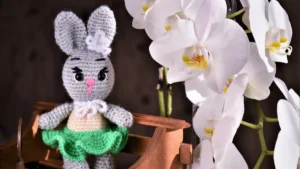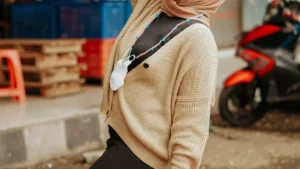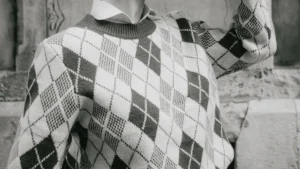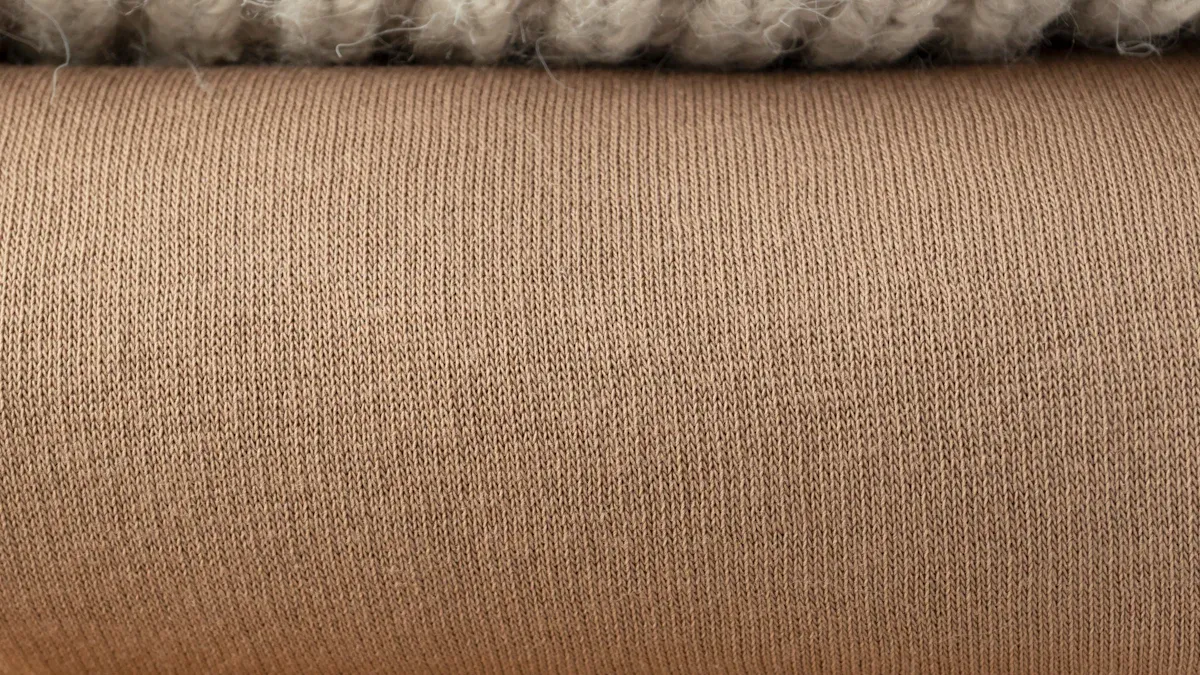
Rib knit fabric is easy to recognize because of its ribbed texture and high stretchability. Many people wonder, “What is a rib knit?” when discussing different types of fabrics. To answer the question, what is a rib knit, it is a fabric made by using both knit and purl stitches, which create vertical lines running up and down on both sides of the material. These unique characteristics set rib knit fabric apart from other types of knits. This is why rib knit is often chosen for garments that need to stretch and maintain their shape. The table below explains what is a rib knit and highlights its main features:
Characteristic | Description |
|---|---|
Visual Appearance | Vertical ribs on both sides, giving a double-faced look |
Stitch Structure | Alternating knit and purl stitches |
Elasticity | Excellent stretch, especially horizontally |
Unique Properties | Superior recovery and comfort |
Common Uses | Neckbands, cuffs, waistbands |
Rib knit fabric is gaining popularity in the fashion world as more people look for clothing that offers stretch and versatility. If you’ve ever wondered what is a rib knit, it’s the perfect choice for comfortable, flexible garments.
Key Takeaways
Rib knit fabric has up-and-down ribs on both sides. These ribs are made by switching between knit and purl stitches. This gives the fabric a stretchy feel and you can use both sides. It stretches well and goes back to its shape easily. This makes it great for cuffs, neckbands, and waistbands. It is also good for tight clothes that need to keep their shape. Rib knit feels soft and warm. It is comfortable to wear and lasts a long time. It hangs nicely, so people use it for casual and sports clothes. You should wash rib knit gently in cold water. Let it air dry to help it stay stretchy and keep its shape longer. Rib knit is different from jersey and interlock knits. It is more stretchy and has a special texture. It also keeps its fit after you wear it many times.
What Is a Rib Knit
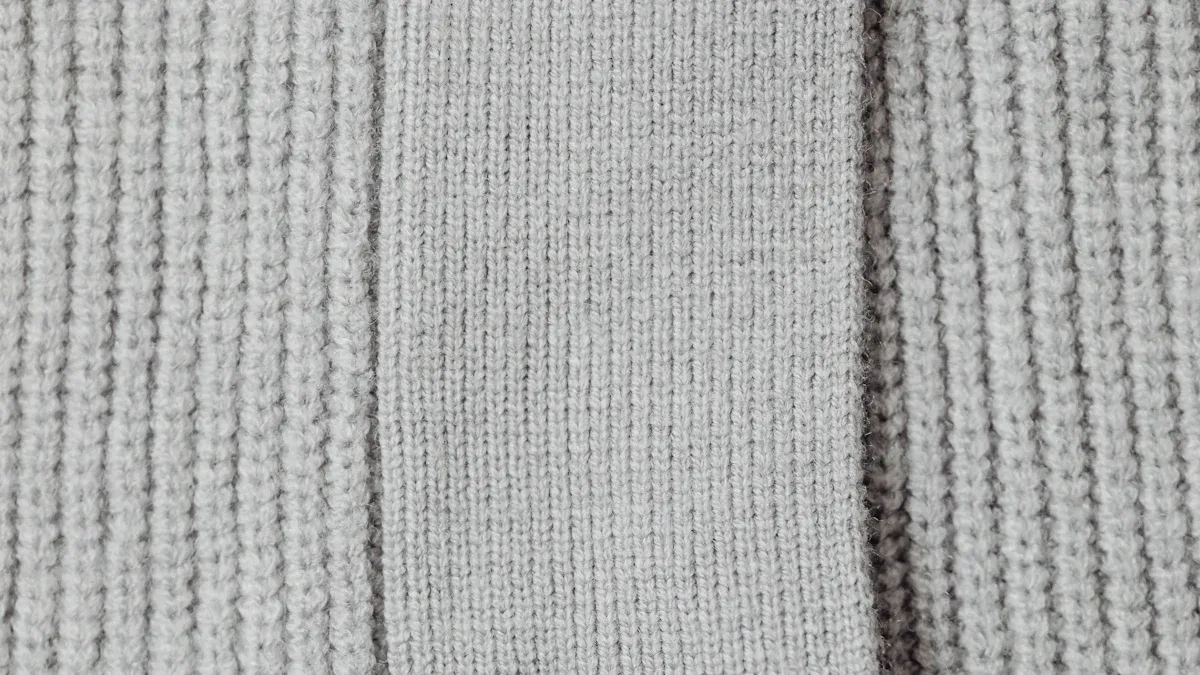
Rib Knit Fabric Construction
Rib knit fabric is special because of how it is made. When people ask, “what is a rib knit,” they find out it uses both knit and purl stitches in each row. These stitches are put next to each other in pairs. Each pair pushes out on different sides of the fabric. This makes lines that stick up and lines that dip down. That is why rib fabric looks and feels different.
There are two ways the yarn moves in rib knit fabric. Tweener strands link the same kind of stitches, like knit-to-knit or purl-to-purl. These run side by side with the fabric. Passing strands join different stitches, like knit-to-purl, and go through the fabric’s thickness. This setup makes the hills and valleys that help rib fabric stretch and feel comfy. How the stitches are placed can also change how tight or loose the fabric is.
Here is a table that shows the technical parts of rib knit fabric:
Aspect | Description |
|---|---|
Stitch arrangement | Rib knit fabric is constructed by alternating knit and purl stitches placed back-to-back, creating pairs that push onto opposite fabric faces. |
Yarn paths | Two types of yarn strands connect stitches: |
Fabric structure | This arrangement causes the fabric to form hills and valleys, giving ribbing its characteristic elasticity and texture. |
Stitch mounting effect | The length of passing strands differs depending on stitch mounting, causing variations in fabric tension and appearance. |
Technical diagrams | Technical diagrams show pairs of stitches, yarn paths, and the three-dimensional structure from the knit-purl alternation. |
Additional notes | The yarn’s springiness and bending forces help create the fabric’s 3D form, and stitch mounting affects strand length and fabric tightness. |
Rib knit fabric is usually made on a double knitting machine. This machine has two sets of needles that cross each other. This helps make the fabric double-faced. The way rib knit is made gives it great stretch and helps it bounce back to shape.
Ribbed Texture and Appearance
The ribbed texture is what you notice first about rib knit fabric. If you want to know what is a rib knit, look for the up-and-down ribs on both sides. These ribs come from the way the knit and purl stitches are put together. They make lines that stick up and lines that dip down. This gives the fabric a soft and bouncy feel.
Rib knit fabric has ribs that go up and down on both sides.
Both sides look almost the same, so the fabric is reversible.
The ribs make the fabric easy to spot because of its texture.
The way it is made keeps the edges from curling up.
Different rib patterns, like 1×1 or 2×2, change how wide and tall the ribs are.
If you look very closely, you can see the yarns loop together to make the ribs. The way the stitches switch back and forth helps the fabric stretch and gives it texture. Since both sides look good, rib knit is great for clothes that need to look neat inside and out.
When you compare rib knit to other knits, like jersey or interlock, rib knit stands out. It is reversible and holds its shape well. The table below shows how rib knit is different from other knits:
Fabric Type | Reversibility | Description | Edge Behavior | Stretch & Stability |
|---|---|---|---|---|
Rib Knit | Reversible (double-faced, almost identical sides) | Vertical ribs on both sides, made by alternating knit and purl stitches | Edges do not curl | Lots of crosswise stretch, good recovery |
Jersey Knit | Not reversible (distinct right and wrong sides) | Smooth face, textured reverse, single knit | Edges curl to right side | Little or no lengthwise stretch, varying crosswise stretch |
Interlock Knit | Reversible (face and reverse look the same) | Double knit made by interlocking two ribbed fabrics | Edges do not curl | More stable, less stretchy than rib knit |
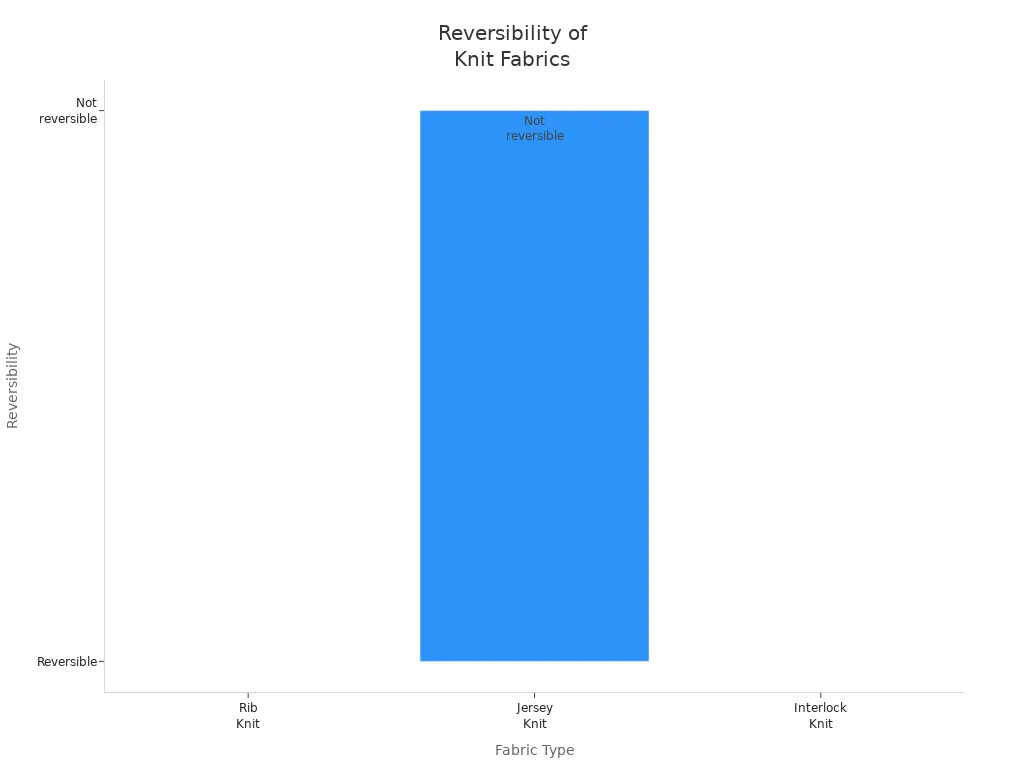
Rib knit and interlock knit both have sides that look the same. But rib knit stretches more and has deeper ribs. Jersey knit has a smooth front and a rough back, and its edges curl up. Rib knit’s double-faced look and flat edges make it great for cuffs, waistbands, and other parts that need to keep their shape.
Tip: Pick rib knit fabric if you want a material with a bumpy pattern, double-faced look, and lots of stretch.
Rib Knit Fabric Features
Key Features
Rib knit fabric is special because of its unique traits. It stretches a lot and is very elastic. The fabric feels soft and warm. It is thick and cozy, so people like it for many clothes. The ribbed structure helps the fabric hang well and move with you. Rib knit keeps its shape after many wears and washes. Its stretch and recovery help it go back to its shape. This is important for tight clothes. The vertical ribs give the fabric texture and style. The fabric drapes nicely for both casual and fancy outfits.
Excellent stretch and high elasticity
Softness and warmth
Good recovery and shape retention
Good drape and flexibility
Textured appearance
Note: Rib knit fabric has a double-faced design. Both sides look almost the same. This makes it great for reversible clothes.
Stretch and Elasticity
Rib knit fabric is very stretchy and elastic. The knit and purl stitches make it stretch across the width. This lets the fabric expand and fit the body well. It does not feel too tight. Rib knit can handle lots of pulling and moving. When you stretch it, it goes back to its shape. This shows good recovery every time.
The fabric drapes well and moves with you. This makes it comfy for active and daily wear. Its stretch and recovery stop sagging or bagging. This is helpful for cuffs, neckbands, and waistbands. Many people pick rib knit for clothes that need to fit well and stay put, like leggings, t-shirts, and dresses.
Two-way stretch for comfort and flexibility
Maintains fit and shape after stretching
Good drape for a flattering look
Durability and Comfort
Rib knit fabric is strong and comfortable. The ribbed structure gives it strength. It can handle lots of wearing and washing. Clothes made from rib knit keep their shape over time. This is because of the fabric’s stretch and recovery. Rib knit is great for neckbands and cuffs. Other fabrics might lose their shape there.
Cotton rib knit is extra strong and keeps its shape better than other knits. The fabric is soft and drapes well, so it feels nice to wear. The vertical ribs help keep warmth in, so it is good for cool weather. Rib knit also lets air through, so it feels good on your skin.
If you wash rib knit gently and avoid high heat, it lasts longer. High-quality rib knit, especially from combed cotton yarn, resists wear. It keeps its drape and fit. Many people find rib knit clothes last longer than jersey or interlock knits. This makes rib knit a smart pick for everyday wear.
Tip: Pick rib knit fabric for clothes that need to last, feel soft, and keep their shape. Its good drape and stretch make it comfy and stylish.
How Rib Fabric Is Made
Knitting Process
Factories make rib fabric with a special knitting method. First, they spin fibers to make yarns. Then, workers get the knitting machine ready. The machine type depends on yarn size and pattern. Some machines are manual, and some are automatic. Newer machines use electronics to help knit and control yarn tightness.
Most rib fabric is made by weft knitting. This way, one yarn makes loops across the fabric. Circular machines make tube-shaped rib fabric. Flat machines make pieces that are flat and wide. Double bed machines can do both rib and purl stitches. These stitches are important for rib fabric. The machine moves needles to make loops in each row. After knitting, the fabric is dyed for color and finished for a better feel.
The main steps to make rib fabric are: 1. Spin fibers into yarns. 2. Set up and run the knitting machine. 3. Knit the fabric with weft knitting. 4. Dye the fabric to add color. 5. Finish the fabric to make it better.
Factories often use cotton or cotton mixed with flax. Cotton makes the fabric soft and comfy. Flax gives it strength and lets air through. Some factories use polyester blends to make the fabric last longer. New machines use smart tech to check quality and cut down on waste.
Common Rib Patterns
Rib fabric comes in different patterns. The most popular are 1×1 and 2×2 rib knit. These patterns show how many knit and purl stitches are in each row. The pattern changes how stretchy and thick the fabric is.
Rib Pattern | Needle Arrangement | Transfer Technique | Typical Uses |
|---|---|---|---|
1×1 Rib | Multiple of 2 + 1 needles on main bed | Transfer stitches to ribber on half pitch | Garment bands, cardigan fronts, areas needing stretch and flatness |
2×2 Rib Knit | Multiple of 3 + 2 needles on main bed | Transfer every 3rd stitch down to ribber | Bands that knit flat, long vertical strips, joined to knit fabric |
The 1×1 rib pattern is very stretchy and has a flat edge. It is good for cuffs and neckbands. The 2×2 rib knit pattern makes bigger ribs and feels thicker. People use it for waistbands and sweater bottoms.
Rib fabric can be made as a tube or as flat pieces. Tubular rib fabric has no seams and is used for t-shirts and sports clothes. Flat rib fabric is easy to cut and sew into shapes. Blends like cotton/flax or polyester-okra mix softness, strength, and eco-friendliness. Factories now use safe dyes and smart machines to make better fabric and less waste.
Tip: Picking the right rib pattern and fiber blend helps designers make rib fabric that works best for each piece of clothing.
Uses of Rib Knit Fabric
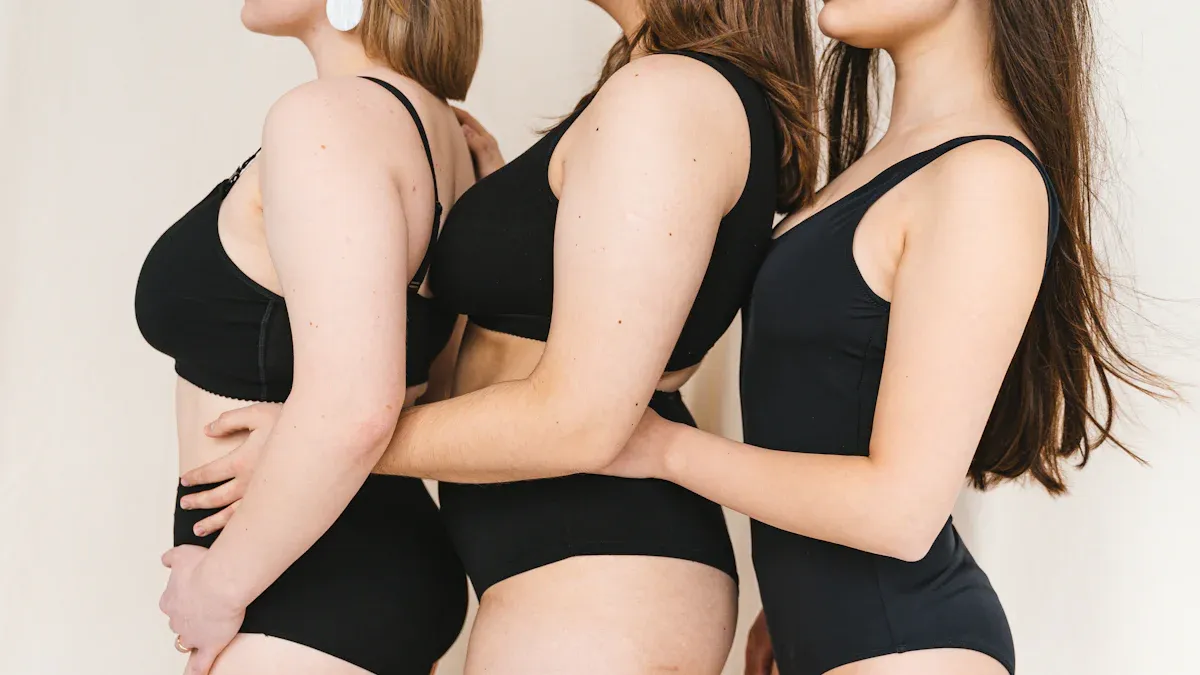
Clothing Applications
Rib knit fabric is used in many clothes. Designers pick it for neckbands, cuffs, and waistbands. This is because the fabric stretches and goes back to its shape. This helps clothes fit well and feel comfy. Many t-shirts and dresses use rib knit for a soft feel. Leggings and pajamas also use this fabric. It lets people move easily.
Rib knit is good for activewear. People who play sports need clothes that stretch and move. Rib knit gives this flexibility. It keeps its shape after many washes. This makes it a smart pick for activewear. Tight clothes like fitted dresses and skirts use rib knit. The fabric’s stretch helps these clothes stay in place and feel nice.
In 2025, rib knit will be seen in bright colors and cool patterns. Designers use shapes, tie-dye, and nature prints. They also mix rib knit with other fabrics for new looks. Sweaters made from rib knit are warm and soft. They are great for cold days.
Accessories and Other Uses
Rib knit fabric is not only for clothes. Many accessories use this fabric because it stretches and feels good. Some common items are:
Socks and stockings, especially at the top so they stay up but do not feel tight
Headbands and hats, like beanies, which fit many head sizes
Gloves and scarves, which give warmth and a snug fit
Bag trims and soft home items, where stretch and texture are useful
The ribbed texture helps these things keep their shape and fit well. Rib knit soaks up sweat and feels soft on the skin. It is strong, so accessories last a long time even if used every day. People like rib knit for things that need to stretch, fit close, and stay comfy.
Tip: Rib knit fabric is best for things that need to stretch, bounce back, and fit well. Its softness and strength make it a top pick for clothes and accessories.
Caring for Rib Knit Fabric
Washing and Drying
Taking care of rib knit fabric helps it last longer. It also keeps the fabric stretchy. Experts say to wash rib knit gently to protect the fibers. This helps the fabric keep its shape. Here are some easy tips:
Wash rib knit clothes in cold water on a gentle cycle. Use a mild detergent. This stops the fibers from getting damaged.
Turn your clothes inside out before washing. This helps stop fading and pilling.
Let rib knit items air-dry instead of using a hot dryer. High heat can shrink or change the shape of the fabric.
If you need to iron, use low heat and steam. Put a cloth between the iron and the fabric.
Tip: Always look at the care label before washing. Some rib knit blends need special care.
The table below shows how to care for rib knit, jersey knit, and interlock knit fabrics:
Fabric Type | Care and Maintenance Characteristics | Stretch and Recovery | Additional Notes |
|---|---|---|---|
Rib Knit | Gentle washing keeps it stretchy; tumble drying helps the knit go back to shape | Stretches both ways very well | Great for neckbands; easy to care for |
Jersey Knit | Edges curl up; does not stretch or bounce back as much | Looser fit, less stretch | Smooth front; edges curl, so it needs more care |
Interlock Knit | Holds its shape well; edges do not curl much | Stretches some, bounces back | Thicker fabric; good for clothes that need structure |
Preventing Deformation
Rib knit fabric can lose its shape if not cared for right. This can happen when the fibers get wet and swell. The fabric might shrink or stretch. Cotton and wool rib knits shrink more than synthetic ones.
To stop rib knit from losing its shape, do these things:
Wash rib knit by hand in cool water with mild soap. This is gentle on the fibers.
Do not stretch the fabric when washing or drying.
Lay rib knit flat to dry. Hanging can make it stretch out.
Keep rib knit away from heat like hot water, sunlight, or hot dryers.
Never use bleach. Bleach can hurt the fibers and change the color.
Fold rib knit clothes to store them. Do not hang them, so they keep their shape.
You can pat off dust before washing. Soak rib knit in cold water for a few minutes to help it last. If you cannot dry it flat, use a mesh bag and dry it in the shade. These steps help rib knit stay soft, stretchy, and looking nice.
Rib Knit vs. Other Knits
Rib Knit vs. Jersey Knit
Rib knit and jersey knit are not the same. Rib knit has knit and purl stitches that make lines up and down on both sides. This gives rib knit a thick and bumpy feel. Jersey knit is made with just one kind of stitch. It has a smooth front and a back that feels a little rough. Jersey knit is softer and lighter than rib knit.
The table below shows how they are different:
Feature | Rib Knit Fabric | Jersey Knit Fabric |
|---|---|---|
Structure | Alternating knit and purl stitches, vertical ribs | Single knit, smooth front, textured back |
Thickness & Texture | Thicker, more textured | Thinner, softer, smooth on one side |
Stretchability | Very high, stretches up to twice its width | Lower stretch, moderate elasticity |
Elastic Recovery | Superior, keeps shape after stretching | Moderate, less shape recovery |
Durability | Better shape retention, resists pilling | Moderate, can lose shape |
Breathability | Enhanced by ribbed air channels | Breathable, but less effective |
Rib knit is great for collars, cuffs, and waistbands. It stretches and snaps back, so clothes stay in place. Jersey knit is used for t-shirts and dresses. People like it because it is soft and comfy. But jersey knit does not stretch or bounce back as much as rib knit. How heavy the fabric is and the print can change how jersey knit feels.
Tip: Use rib knit for clothes that need to stretch and keep their shape. Pick jersey knit for soft, light, and airy clothes.
Rib Knit vs. Interlock Knit
Rib knit and interlock knit are both made with double knitting. But they are not the same. Rib knit is very stretchy and bends easily. It fits tight and works best for neckbands and cuffs. Interlock knit is thicker and does not stretch as much. Both sides of interlock knit are smooth. It is more steady and holds its shape better than rib knit.
Interlock knit snaps back to shape better than rib knit.
Interlock knit keeps its shape longer.
Fabric Type | Stretch Properties | Recovery Properties | Common Uses |
|---|---|---|---|
Rib Knit | Good recovery, less than interlock | Cuffs, collars, waistbands, fitted garments | |
Interlock Knit | Moderate stretch, less than rib | Superior recovery, more stable | Baby clothes, activewear, loungewear, tanks |
Interlock knit is good for baby clothes and comfy wear. It is thick, steady, and easy to sew. Rib knit is better for tight clothes and sportswear. When picking fabric, think about how much it needs to stretch and snap back. Also, think about what the clothing will be used for.
Note: Interlock knit does not curl at the edges. It keeps its shape well, so it is good for beginners and clothes that need to look neat.
Rib knit fabric is known for being stretchy and comfy. It has a special ribbed look that makes it stand out. Many people like rib knit for daily clothes because it feels soft and keeps you warm. It also looks cool and stylish. Surveys show people care most about comfort, easy washing, and how clothes look when they pick knitwear. Fashion experts say rib knit has these main benefits:
Benefit | Practical Use Examples |
|---|---|
Cuffs, collars, waistbands | |
Good Drape | Fitted tops, dresses, sweaters |
Unique Texture | |
Warmth | Sweaters, winter accessories |
Versatility | Activewear, baby clothes, hats, socks |
Some people think rib knit is weak or not trendy. But rib knit is great for new styles and sports clothes. It is strong and comfy, so it is a smart pick for many clothes and accessories.
FAQ
What makes rib knit fabric different from other knits?
Rib knit fabric uses both knit and purl stitches. This creates vertical ribs on both sides. The fabric stretches more than jersey or interlock knits. It also keeps its shape better.
Can rib knit fabric shrink after washing?
Yes, rib knit fabric can shrink, especially if made from cotton or wool. Washing in cold water and air drying helps prevent shrinkage. Always check the care label before washing.
Is rib knit fabric good for sensitive skin?
Rib knit fabric made from natural fibers like cotton feels soft and gentle. Many people with sensitive skin choose cotton rib knit. Synthetic blends may cause irritation for some individuals.
Where can people use rib knit fabric besides clothing?
Rib knit fabric works well for accessories like hats, socks, and headbands. It also appears in home items such as cushion covers and blankets. The stretch and softness make it a popular choice.



